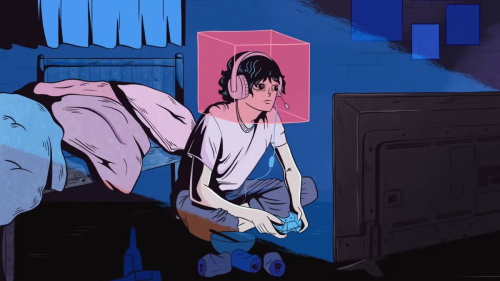The Rise of ‘Hikikomori’ Teens: Japan’s Crisis Goes Global

In today’s society, a deeply thought-provoking group is quietly growing in number — the hikikomori. This term originated in Japan and refers to young people who have withdrawn from society, neither working nor studying, choosing instead to shut themselves away in their homes. They are indifferent to the outside world and often avoid communication even with their own family members. The concept of hikikomori was first introduced in the 1980s by Japanese psychologist Tamaki Saito, and initially, these individuals were regarded with sympathy, as if suffering from a psychological disorder. But as the number of hikikomori continued to grow, society began to recognize the deeper issues underlying this phenomenon.
The rise of hikikomori is no accident — it is the result of a complex interplay of social factors. In the 1990s, following the collapse of Japan’s economic bubble, the country entered a prolonged period of stagnation. The sluggish economy made employment increasingly difficult to obtain, and the high-pressure, ultra-competitive work environment left many young people feeling overwhelmed. Uncertain about the future, they chose to retreat from it entirely, cutting ties with the outside world and isolating themselves at home.
Cultural expectations and social values have further fueled this trend. In many Japanese families, parents place intense pressure on their children to achieve academically and succeed in their careers. For some, these expectations become unbearable. When they fall short, feelings of shame and self-denial often arise. The collectivist nature of Japanese society amplifies this sense of failure — young people who don’t conform to societal expectations are more likely to hide away, seeking to avoid judgment and criticism.
At home, the presence of a hikikomori often creates tension within the family. Parents struggle to understand why their once-active children have become silent, unwilling to leave the house, or engage with the world. Meanwhile, many hikikomori become absorbed in digital entertainment or virtual worlds, gradually losing their sense of self. In extreme cases, some continue to isolate themselves even after their parents die, refusing to participate in funerals or acknowledge the loss — cutting themselves off from reality entirely.
What’s more alarming is that this phenomenon is no longer confined to Japan. Especially since the COVID-19 pandemic, lockdowns and social distancing have made isolation a global norm. Countries such as South Korea have also seen the rise of what some call “invisible youth” — young people who, unable to find stable or “respectable” jobs, withdraw from society in silence.
Globally, the hikikomori trend is often linked to the emergence of the so-called “NEET” group — youth who are Not in Education, Employment, or Training. As higher education becomes increasingly accessible, more and more university graduates face a troubling reality: they are overqualified for low-paying jobs, yet unable to secure the high-paying ones. Unwilling to compromise, lacking motivation or clear goals, many end up choosing to stay home. This trend is particularly prominent in developed nations, such as the UK, the US, and France, where terms like “basement boys” or “stay-at-home youth” describe similar groups.
So why are hikikomori increasing? And why is this trend going global? The answer goes beyond individual psychology — it reveals a series of systemic crises in modern society.
We are living in an era shaped by the triple impact of globalization, technological revolution, and dramatic demographic shifts. New technologies have transformed the job market — traditional roles are vanishing, and new ones demand ever-evolving skills. Meanwhile, the pace of life has accelerated and societal pressures are growing, making it easy for those who fall behind to be left behind completely. At the same time, families, schools, and media continue to promote narrow definitions of success, making it harder for young people to breathe.
Solving the hikikomori issue isn’t as simple as forcing people out of their rooms. The real challenge is creating a more tolerant and flexible society — one that doesn’t demand everyone sprint forward at the same pace. In such a society, becoming a delivery driver wouldn’t be seen as shameful, being a stay-at-home parent would be respected, and even “lying flat” temporarily wouldn’t earn someone the label of a failure.
A truly civilized society isn’t just about skyscrapers or cutting-edge technology. It’s about whether we can catch those who are falling, with empathy and grace. Because behind every hikikomori is a story of struggle. What we truly need to do is listen, understand, and work together to create a reason — and a path — for them to want to open their door again.
Recommended for you:







